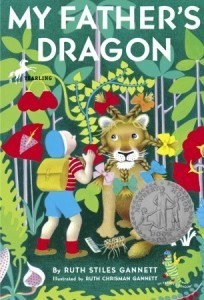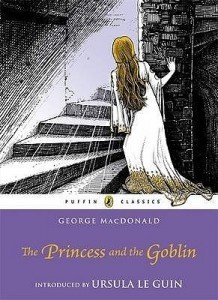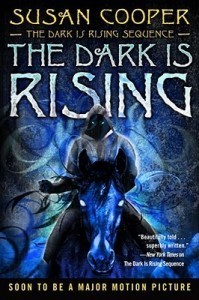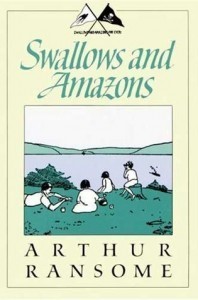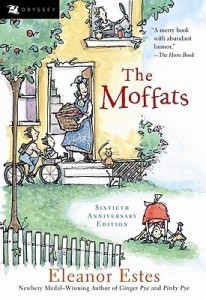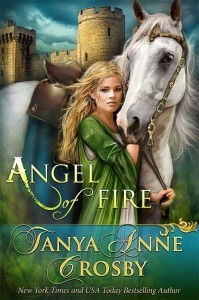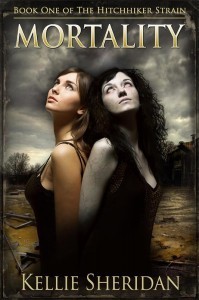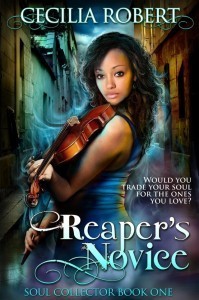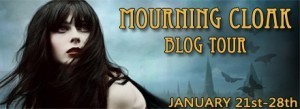Rabia Gale's Blog, page 14
February 18, 2013
5 family read-alouds to try
You’ve been reading chapter books to your kids since your oldest was 2. You’ve read through all of the Narnia and all of the Little House books–twice. You cheered Harry on through his years at Hogwarts, went on a tour of Mr. Wonka’s amazing chocolate factory, and teared up when Charlotte died. You’ve even made it through classics like The Secret Garden and Peter Pan.
Your voice is permanently hoarse and you’ve just about run out of book ideas.
Now what?
Try one of these as your next family read-aloud:
My Father’s Dragon and sequels by Ruth Stiles Gannet
This series is the perfect introduction to chapter books for younger, wigglier children. The few black-and-white illustrations are appealing, the chapters are short and episodic, and the tale is wildly improbably and fun.
The Princess and the Goblin by George MacDonald
This lovely fairy tale features a brave miner boy, a truthful princess, a many-times-great grandmother with rose-scented magic, and a dastardly goblin plot.
The Dark is Rising series by Susan Cooper
This is David’s current read-aloud with the olders. Both of us Gale parents LOVED this MG fantasy series as kids. There’s some confusion over the fact the series is named after the second book. You want to start with Over Sea, Under Stone.
And the movie adaptation sucks. Don’t bother with it.
For a more humorous fantasy angle, check out The Boggart by the same author. A Canadian family accidentally take a boggart from Scotland back home to Toronto. Mayhem and hilarity ensue.
Swallows and Amazons by Arthur Ransome
Now I’ll be the first to admit that these books aren’t superbly written (I always want to edit as I read aloud). And the whole “natives and explorers” angle might bother some folks. BUT these adventurous children–none of them teens yet–are capable, kind, courageous, and resourceful. Their parents let them go off on a sailing/camping adventure and TRUST them to not drown–and these kids live up to the responsibility. For older books, they are also refreshingly free of gender problems. Four of the six children are girls, and there’s never any indication that they are not as capable as boys.
I found these books very empowering when I was a child, and my kids do too. They’re the next best thing to running away and having their own adventures!
The Moffats by Eleanor Estes
If you like the Ramona books, you’ll like the Moffats. Perfect for when you just want an old-fashioned, nostalgic read about small town families.
What are some of your favorite read-alouds? Share in the comments!

February 14, 2013
you can keep your Mr. Darcy
I have nothing against Mr. Darcy, really. Like almost every woman out there, I enjoy the Colin Firth/Jennifer Ehle Pride and Prejudice but Mr. Darcy does not set my heart aflutter. I’m sure he and Elizabeth Bennet will deal very well together, but I don’t envy her good fortune. Sure, he’s rich and handsome and responsible and devoted–but perhaps a tad too boring?
No, I’d rather take a man of action, such as a dashing naval hero, like another one of Austen’s leading men: Persuasion’s Captain Wentworth.
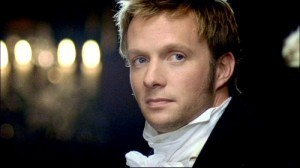
I prefer the other adaptation of Persuasion, but this Captain Wentworth is handsomer. Yes, I’m shallow that way.
Darcy inherited his wealth, but Wentworth, born with fewer prospects, earned it. And there’s just something adventurous about a man in uniform.
But a ship’s captain is bound to be away at sea for long periods of time, so perhaps one should look at self-made men in other professions. Such as North & South’s mill owner, Mr. Thornton.
Especially if he is played by Richard Armitage.
[image error]
“North & South” is my favorite period drama. You should watch it. Even Richard Armitage thinks you should.
However, Mr. Thornton needs to be financially bailed out by heroine Margaret Hale at the end. Perhaps one should look at independently wealthy men again–and while we’re aiming high, how about a Duke?
Like, maybe the Duke of Salford, the titular character of Georgette Heyer’s Sylvester. Like Darcy, he is rich, well-born and insufferably proud, but he does have a great sense of humor. And the adventures he and heroine Phoebe Marlow have are laugh-out-loud funny.

Some handsome actor really needs to play Sylvester in a movie version.
However, one really doesn’t know about these literary heroes. They might have drinking problems or bad dental hygiene or rather outdated notions of what women should or should not do.
No, no. They may look good in paper and on screen, but what about the parts that were edited out? I’d rather choose a real good guy, one I can trust. Like this one:

REAL Handsome Guy with Adorable Kids
Oh, wait! I already did!
To my White Knight, Chief Cheerleader, Tech Support Guy, Co-parent of three gorgeous, smart, and crazy kids, Fixer of Pipes and Broken Toys, Reacher of Objects on High Shelves, and Companion for Life–you’re the only romantic hero and leading man I want.
Happy Valentine’s Day!

February 11, 2013
movie notes: The Hobbit and Captain America
The Hobbit
I was predisposed to like The Hobbit.
First, it was the movie part of the dinner-and-a-movie date that David and I had to celebrate our ten-year anniversary. To put this in perspective, David and I have gone to the movie theaters only thrice since we became parents eight years ago (the other two times for the first Transformers movie and Disney’s Tangled). And nobody wants the movie they see for their tenth wedding anniversary to be a dud.
Second, Thorin is played by Richard Armitage, who also plays Mr. Thornton in my favorite period drama, North & South.
And third, the song. This song. *shivers up my spine*
Er, now on to the movie itself.
Peter Jackson is obviously trying to solidify The Hobbit as a prequel to The Lord of the Rings. Not only did he bring back familiar sets and familiar music, but he added a lot of material foreshadowing the re-emergence of Sauron. A lot of moments–like Gandalf hitting his head on Bilbo’s chandelier, and the flight and fight on the bridges in the mountain–mirrored parts of LoTR.
I liked that dwarves get to be heroes, especially after Gimli was nothing more than comic relief in LoTR. I enjoyed Martin Freeman’s Bilbo much better than I did Elijah Woods’ Frodo. He has more range of expression, at any rate.
For the first time, I saw Elrond happy. I guess I can’t call him the Bitter Elf any longer…
Captain America
I saw this recently, after having watched The Avengers. I liked Captain America. I liked his unashamed patriotism. I liked his character arc from ninety-pound weakling to lab experiment to chorus girl and finally to super hero. The romance was handled with a light touch, very nice.
I was amused to see Hugo Weaving playing Agent Smith again. 
I wish that there had been more time to develop the characters in Captain America’s elite team of Hydra-butt-kickers. As it is, aside from Captain America’s BFF, I didn’t even know–much less remember–the names of anyone on his team.
AND I am annoyed that the ending of the movie–emotionally wrenching as it was–is based on such utter terrible PLOT FAIL. If the writers had spent more than five minutes thinking about it, they could’ve come up with a better reason for WHY Captain America HAD to crash the plane into the ice (besides, yanno, as a convenient reason to get him from WW2 to the 21st century).
As it is, I heartily agree with this “How it Should Have Ended” video:
Have you seen either or both of these movies? What did you think?

February 6, 2013
me, my kids, and Harry Potter
Several weeks ago, our family listened to Harry Potter and the Sorcerer’s Stone on a long (long!) car trip. We followed that up with a viewing of the movie adaptation. For several days thereafter, the children’s play was full of Quidditch matches and House Sortings: “Hogwarts, without Harry Potter”, as my six-year-old put it.
And it occurred to me then that my kids will never know a world without Harry Potter, without his complete story. They will never know the building buzz, the anticipation of the next release, or the speculation over how it would all end.
And even more than that, they will never have the experiences that shaped–long before Harry came on the scene–the way I view the series.
I first saw Harry Potter in my college bookstore, and was instantly attracted by its cover and blurb. It drew me in not because it was something new and different, but because it sounded so comfortably like other British children’s books.
Otherwise known as the Books I Grew Up Reading.
The too-horrible-to-be-believable Dursleys reminded me of Matilda’s terrible family in the book by Road Dahl. The whimsy that characterizes so much of the wizarding world is reminiscent of Diana Wynne Jones’ charming and delightful books. And the whole boarding school aspect–stripped off its magic and co-education–is a lot like Enid Blyton’s Malory Towers and St. Clare’s school series
Blyton’s boarding schools, like Hogwarts, include the stereotypical Good but Stern Teacher, the Nasty Teacher, and the Timid Lacking-Classroom-Management-Skills Teacher. The headmistress is a an awe-inspiring, remote figure, who appears to dispense wisdom at the end of the book, rather like Dumbledore. Blyton’s boarding school girls tread the halls at midnight to have illicit feasts, while Harry’s illicit midnight trips are to the Restricted Section of the library. A chapter or two of a Blyton school story is nearly always devoted to lacrosse matches in the same way Rowling spends time describing Quidditch games.
But Hogwarts also shares elements with my own school experience, sadly, though, without the magic.
I didn’t go to a British boarding school, but I did go to one that had been founded by the British for the education of their young in colonial Karachi.
We didn’t have houses with names like Gryffindor, Ravenclaw, Hufflepuff, and Slytherin, but we did have houses called Frere, Napier, and Streeton (all men who extended and strengthened the British Empire’s hold on India–make of that what you will). And yes, we did earn points for academic and athletic achievement, and a House Cup was awarded at the end of the year.
We didn’t have a singing Sorting Hat, but we did have a school song. (It began with “O God whose mercy long has kept/Our school from age to age”). I still know the first two verses and the chorus–some things you never forget. Lyrics available upon request. 
We wore uniforms and had prefects. In fact, I was a prefect my last year of school, and I wore a badge and a black gown. Our main job was to keep students in orderly lines, check for uniform violations, and make sure there was no unseemly giggling/talking during Assembly.
Fast forward fourteen years, and here are my young, homeschooled children, who have no experience with this kind of school system. Who can’t help knowing major plot points of Harry Potter because they live in a world with Harry Potter (just as my 8yo who has only watched A New Hope knows the relationship between Anakin Skywalker and Darth Vader). Who will read Diana Wynne Jones and Roald Dahl and Enid Blyton after their exposure to Harry Potter, not before.
My kids, who will bring their own, very different experiences to the story of the Boy Who Lived.

February 3, 2013
cover artist: Ravven
Today I’m thrilled to have Ravven, the cover artist behind Rainbird and Mourning Cloak, on my blog, answering questions about her work and process. I first saw her art on DeviantArt, and fell in love with its gorgeous colors, details, and textures:
Welcome, Ravven!
1. Can you tell us a little bit about your artistic journey? How did you get into book cover design?
I’ve always drawn and painted, but never expected to make a career out of it. In the spirit of cutting off one’s nose to spite one’s face I resisted art classes, as I wanted to be a writer and not the artist that everyone assumed I would be. As a consequence my drawing skills are quite subpar, which is a shame. Learn the basics of your craft, kids – then you can do the fun stuff!
In terms of technical knowledge, my years as a web designer helped me greatly. I also worked in the art department of a large Los Angeles portrait studio where I was allowed to shoot on weekends – since my work is mainly digital paint with a Wacom tablet on top of photos, being able to light and shoot my own stock was wonderful. Since we moved to England I’m lacking a studio to shoot in, but it’s on my list. Working in digital marketing and web design teaches simplicity of concept, and how to lead the eye for greatest impact. Since I came from a largely untrained traditional art background, that was invaluable to me as a designer.
2. What are some of the influences on your art?
Hmm, that’s a tough one. There are artists that I love, such as Dave McKean and John Jude Palencar, but they’re so far beyond my art that it’s like looking up at the stars.  I keep files of covers that I really like, which I have here. I like lush covers with good use of shadow and light, very dramatic.
I keep files of covers that I really like, which I have here. I like lush covers with good use of shadow and light, very dramatic.
3. People do judge a book by its cover. What are some common cover design mistakes you see?
I always pick books by their covers. There is a fantasy writer whom I absolutely love (no names) who recently came out with a new book that had a horrible, cheap-looking cover. I normally buy all of his books in hardcover and I just… can’t… buy this one.
My number one cover design mistakes would have to be not having a professional cover done. I know that sounds really self-serving, but it makes me cry when people are trying so hard to publicise their book and the cover is horrible – everything is stacked against them from the start. Other mistakes would be not having the text pop and be clear even at small sizes, and having a cliché cover. Styles in cover art go in and out, and if you’ve seen something too often (pretty girls in big dresses, drowning girls, Big Face covers) it becomes boring.
4. What’s the best part about your job? The worst?
The best part is the collaboration between myself as artist and the author in bringing their vision to life on a cover – it’s such an exciting experience and I feel as proud as a parent when I see my covers out in the world. I love it! Collaboration can actually be the best AND the worst, depending on how much freedom is involved. The best covers come from an open collaboration, trading ideas, throwing out what doesn’t work and having the freedom to experiment with wild-ass ideas. The flip side to that is when the author has an
extremely literal idea of what the cover needs to look like, especially when they wish to exactly re-create a scene from the book. Literal covers quite often end up being so constrained that the end result is lifeless and muddy. I think a cover image should reflect the theme of a book, and how it feels, while still being true to the characters and world.
5. When I first worked with you on the cover for Rainbird, I had a hard time picking stock images because I didn’t know what’s easy to do and what’s not when it comes to photomanipulation. Can you talk about the limitations of photomanipulation?
There is an amazing amount that can actually be done with photomanipulation on covers as long as you can paint – that is the most important thing. On Rainbird, for example, the original model was wearing a short denim jacket and denim cutoffs. Pants were added, which thank goodness were mostly in shadow, and then two versions were created, one with bare arms and one with a duster. Both were painted (the duster used some of the detail from the original jacket). You can change or replace hair entirely, change the color of hair and eyes and skin, and add clothing – but generally it all has to be painted to blend it and fit cloth to bent arms, etc.
6. What’s the most challenging cover you’ve worked on?
One of the most challenging covers was a science fiction cover for Kala Wade Media – since I don’t do 3D work or paint things from scratch, coming up with the open space ship bay behind the characters was tough. Another challenging cover was one of the Westerns I worked on, simply because it was impossible to find the right stock. Just try doing a search for “handsome cowboy” or “young ranch hand” or whatever and see what you get…lots and lots of musclebound guys wearing cowboy hats and not much else. 
7. What are three of your favorite covers (not your own)? What makes them stand out?
Seed by Rob Ziegler, for it’s use of stunning image-as-typography. I can’t do this kind of work, but I admire those who can.
Wither by Lauren DeStefano – a “pretty girl in a dress” cover that transcends all the others. One of my all-time favourites.
The Drowning City by Amanda Downum. Deep shadows, bright highlights, extreme drama in the way that the character is almost silhouetted. Lovely.
8. Is there a genre or sub-genre that you haven’t done a cover in and wish that you could?
I’d like to do more horror and suspense. I love those scary, even gory, covers and haven’t had the chance to do many of these.
Thanks for stopping by, Ravven!
Check out Ravven’s website, or her Pinterest board for more of her lovely covers.

February 2, 2013
saturday, with links
A couple last links from the Mourning Cloak blog tour:
A review and a guest post–Making Genre Soup–at Kaidan’s Seduction
An extract at Feeling Fictional
**
Thank you to all the bloggers, reviewers, writers, and readers who helped spread the word about Mourning Cloak’s release. You made my launch week the best ever!
And now, we will return to our regularly-scheduled blogging here, with links to pretty covers, discussions about movies and books, updates on my other creative endeavors, and–oh, why not?–some thoughts about the educamation of children.
**
Tabs open on browser:
The 22 rules of storytelling, according to Pixar
The 100 best movies challenge, at Catherine, Caffeinated
Journey North starts its 2013 Mystery Class! (This is a GREAT geography project for upper elementary/middle school).
And there’s a recipe for halwa, as well, but I won’t link to it since I ended up modifying it (plus it forgets to tell one when to add the sugar, a rather important step! and I had to use vegetable oil instead of clarified butter, which might’ve also affected the taste–it was close to what I’m used to, but not quite)

January 31, 2013
let’s talk serials
One of my goals for this year is to Try New Things. Not only does it mean writing out of the box, but it also means trying new ways of reaching readers with my stories.
Such as web serialization.
Now, I’m not a big reader of serialized fiction, which has a lot to do with not liking to read fiction on a computer screen. Last year, though, I got into Lisa Ahn’s wonderful flash-fiction-sized Wing-Feather Fables and Liana Mir’s short-shorts and her serial, City of Glass.
And then I came across M. C. A. Hogarth’s work, including her serialized fiction (and the Three Michas, cartoon jaguars that explain art business principles), and Wattpad–and had an epiphany.
Hey, not everyone is like me! Some people actually like reading stories online, in small doses spread over many months!
(I wonder if these are the same people who also like listening to audio books, something else that I haven’t been able to get into).
So, here’s want I want to do. I have this awesome (well, yes, I think it’s awesome) novel called Quartz. You may have heard me talk about it a million times, or two. It’s kind of steampunk, a bit of science fiction, a lot of fantasy–and all adventure.
Here’s the blurb (culled from 15 single-spaced pages of a document entitled Quartz Query):
Rafe Grenfeld, Oakhaven diplomat and spy, has problems: his embassy’s been arrested, he’s trapped in the hostile totalitarian state of Blackstone, and he’s just learned of the discovery of a massive pillar of quartz from an informer who died before revealing its location.
Once, quartz powered magical devices, but the mages who created them are long gone. Now, desperate states vie for rare veins of quartz that provide light and heat, and mean the difference between starvation and survival. Determined to return home with the news, Rafe forms an uneasy alliance with Isabella, a demon slayer with undisclosed loyalties.
Riven with internal strife and facing war with Blackstone, Oakhaven is not willing to pursue a rumor. It’s up to Rafe to find the quartz he believes is vital to his people, even if it means defying orders and collaborating with the mysterious and maddening Isabella. Unfortunately, they have competition: Karzov, chief of Blackstone’s secret police and architect of a plan to resurrect magical weaponry, is also hunting for the quartz—and he has help. But it’s not enough for Rafe to dodge mind-destroying demons and allies-turned-enemies. He must also overcome his quartz-induced disability—the one that leaves him writhing in agony—and tap into powers long thought lost, before his world is torn apart by famine and war.
And I’d like to serialize this, right here.
But, Rabia, you might be thinking–why not just self-publish Quartz, like you did Mourning Cloak and Rainbird and Shattered?
Good question. And in no particular order, here are my thoughts:
I’ve never serialized before (except for that one time, with Wired). No time like the present to try.
I haven’t self-published anything longer than Rainbird, which topped out at less than 32K words. Quartz is 101K words and I’m intimidated by the idea of self-publishing it. The line-editing and the proofreading passes are a lot of work. I’d rather spread them out over the many months of serialization than do it all in one go. It’s the whole how-to-eat-an-elephant thing: one bite at a time.
I want to bring readers to a place that is unquestionably mine–my website. Right now I’m selling through e-tailers, which means I don’t have direct access to my readers. I hear rumblings that Amazon might–bad move!–take away the 70% royalty rate unless you enroll in KDP Select. Therefore, I want to have lots of little baskets for my eggs, to make sure that all my readers–and income–aren’t coming through one channel.
So, how are you planning on this serial thing working out?
Well, so far the tentative plan is–I’m still working out the kinks of this–following a model similar to Hogarth’s (hey, I’m teachable).
I would post a scene (less than 2K words) once a week, probably on Tuesdays.
If I get enough donations ($5? $10?), they would pay for an extra episode per week, probably on a Saturday. What this means is that if you like the story, you can pay to read it faster. Without donations, the story will continue to run at its weekly pace.
The money I get for Quartz will go towards paying for cover art for the ebook. If I get more than that, I’ll hire a copyeditor/proofreader (oh, yes, please! My eyeballs are still bleeding from the 354 rounds with Mourning Cloak). And if I seriously overfund (along with getting my own pony, a castle made of candy, and rainbow kittens), I’ll pay myself.
Anyone who donates to the serial will get an ebook version for free, and their name–if they choose–in the Acknowledgements.
So, what do you think? Would you read serialized novels? Any tweaks you’d suggest to this system? Comment away!

January 29, 2013
conversations with Miss M.
Setting: Miss M., the Baron and I are snuggled in bed, reading about a kid who had a bad dream.*
Me: *pointing to the illustrations of the robots and monsters in the dream*: They don’t look so scary. See, they’re smiling.
Miss M.: But, Mom! Those are wicked grins!**
Doh! Of course, the bad guys are leering evilly. How silly of me.
*That would be The Berenstain Bears and the Bad Dream
**She’s six, reading voraciously, and picking up all kinds of phrases and vocabulary that are not part of our everyday conversation. ***
***Oh, and she just came to me to tell me she heard a sound like a tarantula scraping against a pipe. O.o

January 28, 2013
Siri Paulson recommends children’s historical fiction
Please give a big welcome to fellow WANA blogger Siri Paulson, who’s joining us here today to talk about some of her favorite historical fiction books from her childhood.
Thanks for having me, Rabia!
I’m here to talk about books, which thrills me to no end because I’m a book lover from way back. Growing up, I read all sorts of things, but one of my favorite genres was historical fiction. Other times and places held an endless fascination for me. It didn’t really matter when or where a book was set, as long as the setting was as unlike my Canadian suburban existence as possible.
But, of course, I had favorite periods. Here are a few of them, along with the books that inspired me most…
The Middle Ages and the Renaissance
Another of my preferred genres was fantasy, so anything with castles was automatically a hit. Wandering bards, artists’ guilds, and apprentices? Yes please!
Adam of the Road (1943) by Elizabeth Janet Gray. Set in the thirteenth century. A young boy who idolizes his minstrel father is thrilled to have the chance to travel with him. But when he loses his dog and is separated from his father, he ends up crossing England to find them again. Along the way, he meets other traveling performers, makes new friends, and of course, has many adventures.
The Door in the Wall (1949) by Marguerite de Angeli. Set in the fourteenth century. An English boy’s dreams of being a knight are dashed when he loses the use of his legs. With the help of a friar and a minstrel, he sets out for the castle where he was originally slated to become a page. There he discovers that one doesn’t have to be a knight to be brave, and sometimes a boy on crutches is the best-suited to save the castle. De Angeli also wrote Black Fox of Lorne, a thrilling tale about a pair of Viking twins in Scotland.
Master Cornhill (1987) by Eloise Jarvis McGraw. Set in the seventeenth century. A boy orphaned in the Great Plague becomes an apprentice to a Dutch mapmaker living on London Bridge, but his new home is jeopardized in the Great Fire of London. Full of wonderful details about mixing paints in the studio and selling printed songs in the market. I also loved The Golden Goblet by the same author, about a servant boy in Ancient Egypt.
The Second World War
At some point I developed a strange fascination with the experiences of Jewish children during the war. I read The Diary of Anne Frank, of course, but also…
Number the Stars (1989) by Lois Lowry. Lowry is probably more famous for The Giver, but this was how I discovered her. A Danish girl and her family take in her Jewish best friend and try to keep her safe while still working with the Danish Resistance. The girls don’t know everything the adults are doing – secrets are kept from them for safety – but there’s enough for the events to be quite exciting while still realistic.
When Hitler Stole Pink Rabbit (1971) by Judith Kerr. A German Jewish girl and her family become refugees in the early 1930s, living in Switzerland and Paris before finally reaching England. She and her brother are young enough to be a little confused about the whole thing; they think it’s a big adventure, even though they know there’s danger…which keeps the book mostly lighthearted.
From Anna (1972) by Jean Little. The family here isn’t Jewish, but they do flee Germany in the 1930s. Anna, the youngest in the family, is klutzy and slow in school, so she’s terrified of moving to a new country where she doesn’t speak the language. But in Canada she discovers she’s not dumb after all, but visually impaired. Getting glasses is easy; learning to come out of her shell is harder. There’s also a sequel, Listen for the Singing.
Honorable mentions: ancient Egypt and Israel, pioneer-era North America, and nineteenth-century Britain. I also have to mention Lucy Fitch Perkins, who wrote a long series of books about twins in various countries and time periods – The Cave Twins, The Spartan Twins, The Puritan Twins, The Dutch Twins, and so on – though I wouldn’t be surprised if they read as very dated now.
Over to you! Which times and places are (or were) your favorite to read about? Any favorite historical novels or authors to share? Let us know in the comments!
 Siri Paulson is a science fiction and fantasy writer and an editor of both fiction (at Turtleduck Press) and non-fiction. She recently moved into a big old house in Toronto and is still wondering what she got herself into. In her spare time (when she has any) she dances, knits, and dissects movies.
Siri Paulson is a science fiction and fantasy writer and an editor of both fiction (at Turtleduck Press) and non-fiction. She recently moved into a big old house in Toronto and is still wondering what she got herself into. In her spare time (when she has any) she dances, knits, and dissects movies.
Her short fiction can be found most recently in the anthology Seasons Eternal: Stories of a World Frozen in Time. You can read more about it at Turtleduck Press. Seasons Eternal is available in print, Kindle, or your ebook format of choice.

January 26, 2013
saturday, with links
The Mourning Cloak blog tour goes on!
Here’s a lovely review by Ivana and an interview with yours truly at Willing to See Less. And another nice review at Tammy’s Tea Time.
***
Also, this is TOTALLY Kato’s music. I revised the last scenes of Mourning Cloak to this:
Guardians at the Gate by Audiomachine


